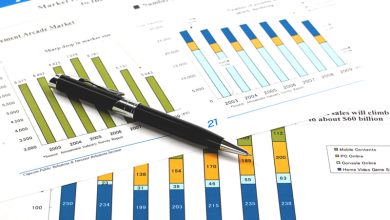
How a Rethink on Rates After Strong US Jobs Data Could Shake Up Markets
By Saqib Iqbal Ahmed and Lewis Krauskopf
NEW YORK – The impact of a surprisingly strong U.S. employment report could disrupt various trades that rely on decreasing interest rates. This shift in expectations may lead investors to reconsider how aggressively the Federal Reserve will lower borrowing costs in the near future.
In recent months, hopes for significant rate cuts fueled investments in areas such as rising Treasury prices and a weaker dollar, while also benefiting sectors like utilities within the stock market. The Fed implemented a notable 50 basis-point cut last month, affirming those expectations temporarily.
However, the outlook for rates has become less predictable following last Friday’s labor market figures, which revealed that the U.S. economy added over 100,000 more jobs than anticipated. This suggests that substantial cuts may be less necessary this year, increasing the likelihood of a reversal in many trades that were predicated on lower rates.
Following the labor report, futures linked to the fed funds rate indicated that traders no longer anticipated another 50 basis-point cut during the Fed’s upcoming November meeting, contrasting with market expectations that pointed to over a 30% chance of such a reduction just a day prior.
Here’s a closer examination of market segments that could be influenced by this shift in rate expectations.
DOLLAR REBOUND
Last week, net positions against a weaker dollar climbed to $12.91 billion in futures markets, marking the highest level in nearly a year. This surge came after the dollar experienced its worst quarter in almost two years. On Friday, however, the dollar reached a seven-week high against a basket of currencies, with potential for further gains if bearish investors are compelled to adjust their positions.
"Dollar bears had clearly overextended themselves entering this week and are now facing the repercussions," stated Karl Schamotta, chief market strategist at Corpay in Toronto.
TREASURY REVERSAL
The prospect of stronger economic performance may also intensify the rebound in Treasury yields. The yield on the benchmark 10-year U.S. Treasury, which inversely correlates with bond prices, fell to a 15-month low of 3.6% in September as investors adjusted for anticipated rate cuts. Following the employment report, yields increased to 3.985% on Friday, the highest level in about two months.
Zhiwei Ren, a portfolio manager at Penn Mutual Asset Management, highlighted that the jobs report was a significant surprise that countered the prevailing consensus and popular trades in the Treasury market betting on price increases alongside further rate reductions.
HEDGE DEMAND
Bolstered expectations of economic resilience could lead investors to shift focus from options hedging to pursuing additional gains in the stock market. Charlie McElligott, managing director of cross-asset strategy at Nomura, suggested that this pursuit "could act as fuel for a market rise towards 6,000 and beyond," equating to an approximate 4% increase.
In the options markets, various skew measures—indicating relative demand for downside protection versus upside speculation—have remained elevated after reaching peak levels during an August market downturn, despite the S&P 500’s recovery.
The benchmark index gained 0.9% on Friday and closed at 5,751.07, nearing a new high. "The rally following the impressive labor data indicates that many are not positioned for significant upside," McElligott remarked.
Yet, a potential counterforce in the near term could be a rapid increase in yields, which may reduce the attractiveness of stocks relative to bonds, according to Jeffrey Schulze, head of economic and market strategy at ClearBridge Investments. He noted that the 10-year yield remains about 100 basis points lower than it was a year ago, but clarified that the report should positively influence risk assets and U.S. equities in the medium term.
BYE TO BOND PROXIES?
Investors might also need to reassess their strategies in certain stock sectors that became popular as yields declined.
Among these are high dividend-paying stocks, which gained favor among income-seeking investors as yields fell. The S&P 500 utilities sector has surged 28% year-to-date, outpacing the S&P 500’s 20.6% gain.
"The economic outlook may not be as dire as previously feared, reducing the necessity for large rate cuts that drove interest in higher-yield sectors," noted Robert Pavlik, senior portfolio manager at Dakota Wealth.
 GOOGL
GOOGL  META
META 


